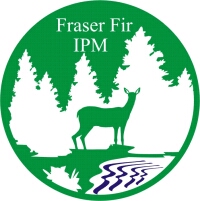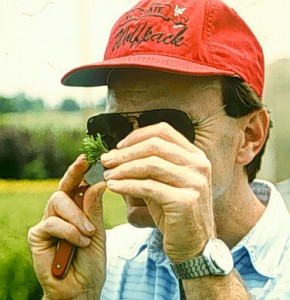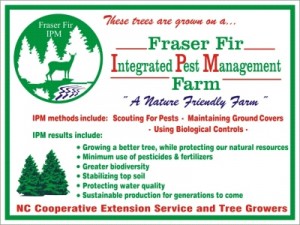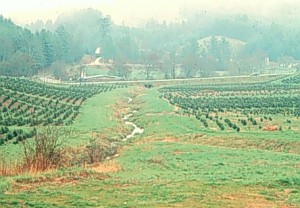IPM Christmas Tree Farms
go.ncsu.edu/readext?295855
en Español / em Português
El inglés es el idioma de control de esta página. En la medida en que haya algún conflicto entre la traducción al inglés y la traducción, el inglés prevalece.
Al hacer clic en el enlace de traducción se activa un servicio de traducción gratuito para convertir la página al español. Al igual que con cualquier traducción por Internet, la conversión no es sensible al contexto y puede que no traduzca el texto en su significado original. NC State Extension no garantiza la exactitud del texto traducido. Por favor, tenga en cuenta que algunas aplicaciones y/o servicios pueden no funcionar como se espera cuando se traducen.
Português
Inglês é o idioma de controle desta página. Na medida que haja algum conflito entre o texto original em Inglês e a tradução, o Inglês prevalece.
Ao clicar no link de tradução, um serviço gratuito de tradução será ativado para converter a página para o Português. Como em qualquer tradução pela internet, a conversão não é sensivel ao contexto e pode não ocorrer a tradução para o significado orginal. O serviço de Extensão da Carolina do Norte (NC State Extension) não garante a exatidão do texto traduzido. Por favor, observe que algumas funções ou serviços podem não funcionar como esperado após a tradução.
English
English is the controlling language of this page. To the extent there is any conflict between the English text and the translation, English controls.
Clicking on the translation link activates a free translation service to convert the page to Spanish. As with any Internet translation, the conversion is not context-sensitive and may not translate the text to its original meaning. NC State Extension does not guarantee the accuracy of the translated text. Please note that some applications and/or services may not function as expected when translated.
Collapse ▲ What is IPM?
What is IPM?
One definition of Integrated Pest Management or IPM is “a strategy for keeping plant damage within bounds by carefully monitoring crops, predicting trouble before it happens and then selecting the appropriate controls — biological, cultural, or chemical as necessary.”
Sounds like a textbook. So what does this mean to your Christmas tree?
Christmas tree growers in western North Carolina, with the help of NC State University, have learned a better way of growing trees called IPM. It’s a way of using less — less pesticides and fertilizers — to grow a better, prettier tree. How? By growing SMARTER.
An IPM Christmas tree grower has to learn new techniques.
 Scout. IPM growers regularly walk through each block of trees to find out which pests are becoming a problem. The growers use a magnifying lens to see the tiny Christmas tree pests. It’s not an easy skill to learn, but only by scouting can a grower know when pesticide applications can be avoided.
Scout. IPM growers regularly walk through each block of trees to find out which pests are becoming a problem. The growers use a magnifying lens to see the tiny Christmas tree pests. It’s not an easy skill to learn, but only by scouting can a grower know when pesticide applications can be avoided.
Grow two crops, not just one. Growers are in the business of growing Christmas trees. However, that business depends on successfully growing a second crop, ground covers, around the trees. Ground covers reduce erosion and promote better root growth, and there’s an added benefit. When they flower, they attract beneficial insects which help control Christmas tree pests. Ground covers also provide habitat for many kinds of wildlife — from quail to butterflies — thereby increasing biodiversity.
Recognize and protect. Many of these beneficial insects are small and easily overlooked. The IPM Christmas tree farmer has learned to recognize them when scouting. They also protect these beneficials through wise pesticide choices. By using pesticides that kill only the pests and not the “good” insects, an IPM grower gets added free pest control.
Hold off! They hold off on putting out pesticides that they might have used otherwise. IPM growers learn patience as they wait to see if natural controls such as changing weather and beneficial insects will control their pest problems for them. That’s hard to do when their investment of time and money is on the line. However, IPM growers have enough confidence in the IPM program to do just that.
Why does a grower switch to IPM production?
 After all, doing IPM means more work. But many growers think it’s worth it. Some of the benefits include:
After all, doing IPM means more work. But many growers think it’s worth it. Some of the benefits include:
- Using fertilizers and pesticides only where appropriate. That saves money and natural resources.
- Growing a better quality tree because problems are caught earlier.
- Knowing the only environmental impact of their farm is a positive one.
IPM has been shown to protect water quality.
 Studies of aquatic insects have made it official. Christmas trees grown using IPM have little effect on bordering creeks. Insects extremely sensitive to water pollution, such a mayflies, are frequently found below tree farms.
Studies of aquatic insects have made it official. Christmas trees grown using IPM have little effect on bordering creeks. Insects extremely sensitive to water pollution, such a mayflies, are frequently found below tree farms.
Aquatic insects are primary food for trout. They are also good indicators of pollution. If too much sediment, pesticides or fertilizers get in the creek, the insects won’t survive. Because IPM Christmas tree growers minimize the use of pesticides and fertilizers, they do a better job of protecting creeks than many other land uses in the mountains, including developments. According to one study by the Biological Assessment Unit of the NC Division of Water Quality, “Christmas tree farming has little negative effect on fauna of adjacent streams with the use of IPM and adequate stream buffer zones.”
Innovative growers and County Extension Agents coupled with the resources of North Carolina State University College of Agriculture and Life Sciences have made the Christmas tree IPM program possible. For more information on IPM, contact your local County Extension Center.
Prepared by:
Jill Sidebottom, Ph.D.
Area Extension Forestry Specialist, Mountain Conifer IPM
Extension Forestry, College of Natural Resources


